My long-crushed spirit rose, cowardice departed, bold defiance took its place; and now I resolved that, however long I might remain a slave in form, the day had passed forever when I cold be a slave in fact. I did not hesitate to let it be known of me, that the white man who expected to succeed in whipping must also succeed in whipping must also succeed in killing me.
Frederick Douglass
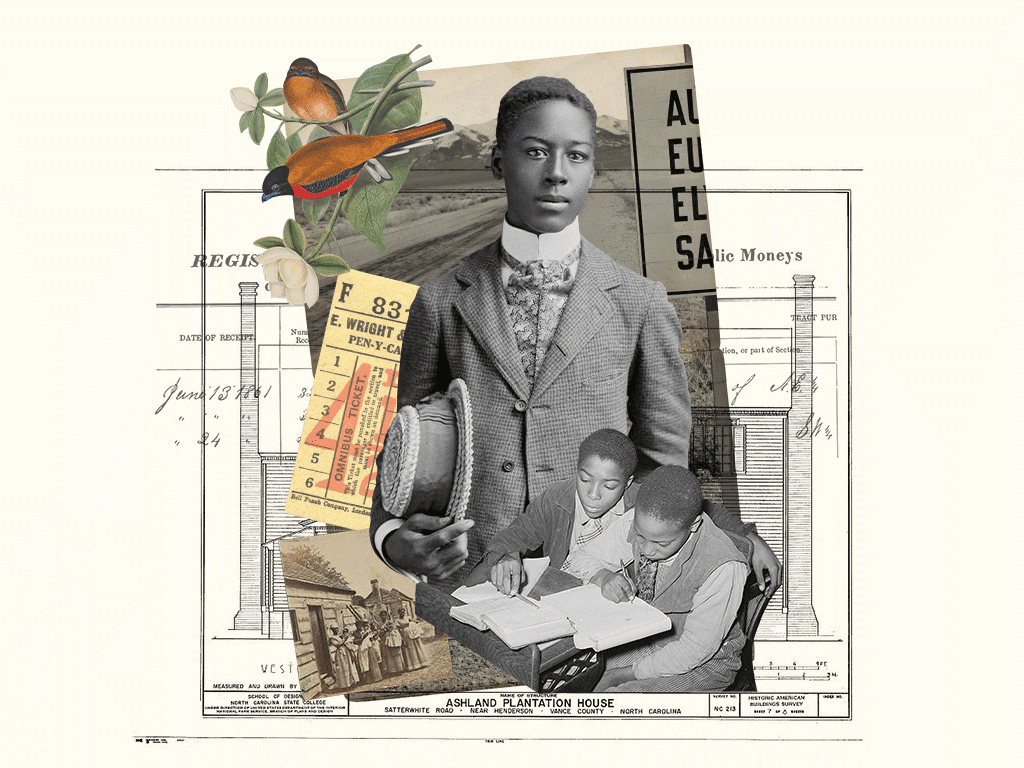
Narrative of the Life of Frederick Douglass: An American Slave
Frederick Douglass
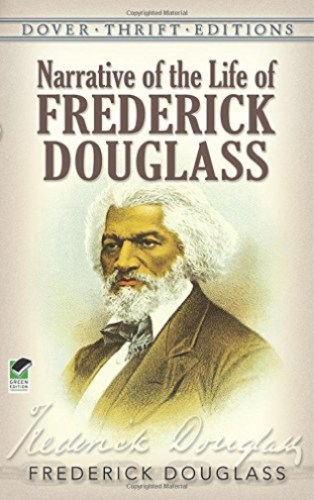
Douglass, Frederick. Narrative of the Life of Frederick Douglass, An American Slave. Dover Thrift, ed.
"Narrative of the Life of Frederick Douglass" is an unfiltered story of slavery.
Douglass recounts his life from his earliest memories until his successful escape to freedom. Douglass recounts the horrors of his personal experiences, tying them to the common experiences of all Africans in bondage. He details the brutal bloody whippings as well as the emotional torture inflicted upon the enslaved. Douglass’ narrative puts to rest any question of the African’s inferiority or inherent docility in the face of enslavement.
Why This Text is Transformative?
Douglass’ narrative addresses the important question what it means to be human and who gets to decide that for anybody.
Narrative of the Life of Frederick Douglass is the story of humanity. One goal of the slave narrative was to assert the African’s humanity. Douglass’ narrative addresses the important question what it means to be human and who gets to decide that for anybody. This text is a way to get students talking not just about the history of slavery, but about the importance of education, and self-awareness.
A Focused Selection
Study Questions
Chapters 1-4
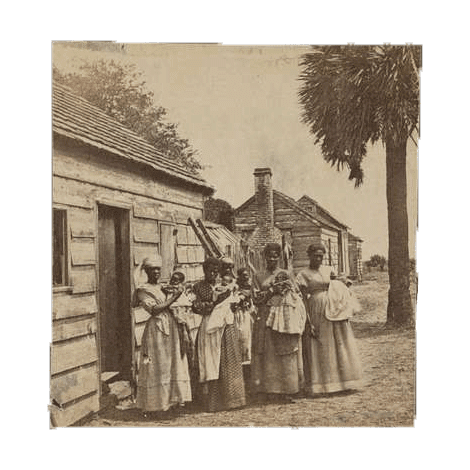
Chapter 1-4 and Chapter 10 provide an opportunity for the students to understand the early life of slaves and general life as an enslaved person. Chapter 10 helps the students see that the enslaved African was indeed an agent of his/her own freedom and that resistance was natural and common.
Class 1 – Chapters 1 – 4
1) In chapter 2, Douglass says, “I have often been utterly astonished, since I came to the north, to find persons who speak of the singing, among slaves, as evidence of their contentment and happiness.” What kinds of things do you do when you are unhappy that might be “misinterpreted” as something different? How did that make you feel?
2) Douglass’ description of the brutality of slave life is unflinching and graphic. Have you ever had to tell a story that included graphic violence? Did you tell it anyway or did you soften it for the reader/listener?
Chapters 6-7

Chapter 10
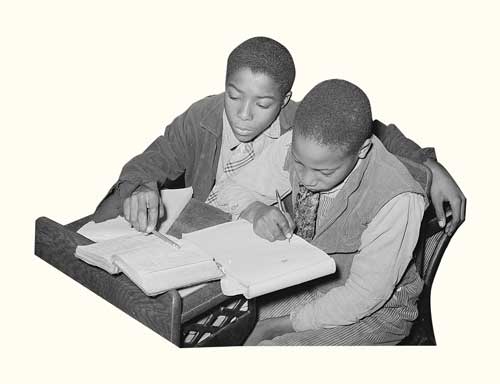
Class 2 – Chapter 10
1) At 16 years old, Douglass is sent to Mr. Covey to be “broken”, yet Douglass ultimately resists and refuses to be what Covey and wants to turn him into. Has anybody ever tried to make you be something you did not want to be? How did you resist?
2) Education is clearly important to Douglass. It is a theme that runs through the entire narrative. What does education mean to you? How important is it to you? Would you go to the lengths of Douglass and the slaves he taught, knowing what the consequences would be if you were caught?
3) In Chapter 10, Douglass notes that “vicious dissipation” can be confused with liberty? What distinction does he draw between “virtuous freedom” and “vicious dissipation”? Where do you find examples of each, either in your own life or in others? In your opinion, what do most people think freedom looks like today? What do most people want to be free for?
Appendix
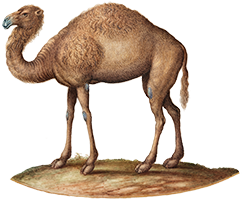
Building Bridges
A Recommended Pairing
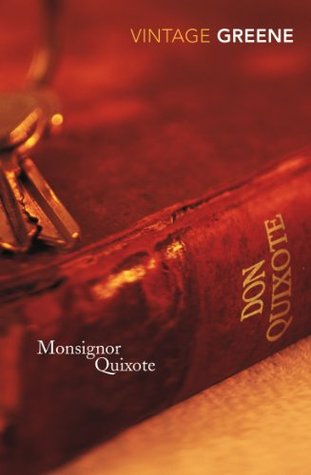
A wonderful short novel by Graham Greene, Monseigneur Quixote, recasts Cervantes’ magnum opus in a way that captures much of the humor and pathos in a more modern context, as the adventures of a Roman Catholic priest and a communist mayor taking to the road together in Spain during the Franco years. The richly imagined characters and their conversations make it clear that the issues that drive Don Quixote’s idealistic quest are not raised only in books of chivalry. How do we live with a commitment to the ideals of a religious faith or a political ideology which, though noble, may not fit easily with and may have unfortunate consequences in the unforgiving world in which we find ourselves? What difference does friendship make in our lives?
Supplemental Resources
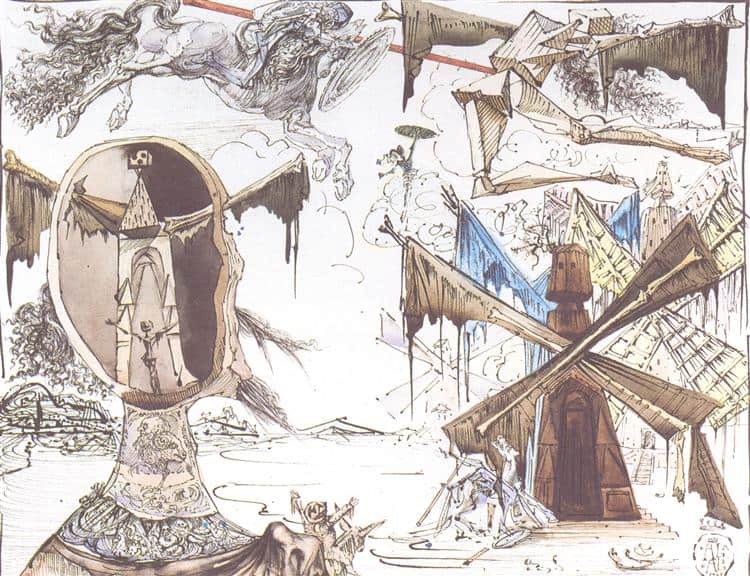
Don Quixote and the Windmills, 1945 - Salvador Dali - WikiArt.org
Don Quixote has been an inspiration for many visual artists. Spanish surrealist Salvador Dali returned to the novel multiple times throughout his long career, creating sketches, paintings, and sculptures of Don Quixote and Sancho, depicting important episodes in the book. A pairing of an episode with one of Dali’s works can lead to a stimulating discussion.
What details do students notice? What do his artistic choices suggest about his interpretation of the characters? To the extent that students are familiar with the story of Don Quixote, it is likely to be as it is filtered through the musical The Man of La Mancha. The musical has its own merits, and is framed by the interesting device of placing Cervantes on stage as a narrator, but of course it is impossible for it to capture much of the complexity of the book – and it alters the ending dramatically. Students may find it interesting to compare the two endings.
Text Mapping
Discipline Mapping
English/Composition Studies
Humanities
History
Area Studies
Page Contributor



